We disassemble the Viking business model

Hello! We are now doing a game about the Vikings, and while I found out about them, a couple of unobvious details were revealed. But for now, the important:
- They reached Africa with raids and later settlements.
- There is a Norman theory of the founding of Russia - they say, these are our ancestors. She is controversial, there is much more evidence of the constant cooperation of peoples (read: almost all Varangians = Vikings, and Tor and Perun are actually almost the same man).
- These guys made the coolest ships and the coolest navigation of the seventh-tenth centuries, and already knew the phenomenon of polarization of light (or rather, did not know, but used).
- They introduced direct democracy, which later became the Althing (and still works in Iceland).
- A lot of things in life coincide or look like what our Slavic ancestors did.
That is, it can be simplified once again by saying that the Vikings were heavily armed technological pirates. Such a pirate special forces. And they launched a bunch of historical processes. And they also have a huge cultural layer of sagas, which you still hear in cinemas.
The starting point of the search was something else: a guy from New Zealand, stubborn on the Vikings, made a cool game. So, was he able to convey the setting correctly?
All the time, it seemed to me that the Vikings were some kind of northern dudes from Norway, who sometimes came to Russia and the neighboring countries on their drakkaras, robbed, killed, traded and raped - what happens. And that their culture is extremely far from ours - something like Loki, who turned into a horse and became pregnant from a giant horse, and then gave birth to a GMO foal - he is incomprehensible by Slavic logic.
It turned out that almost all Varangians are Vikings. That is, these brave parties were not just in Russia, but were regularly here. I mean, the debate is still ongoing, but I'll just quote Vicki :
Various Scandinavian origin of the Varangians can also be evidenced by various foreign written sources, data from archeology and language. Objects of Scandinavian origin were found in all Old Russian trade and craft settlements (Ladoga, Timerevo, Gnezdovo, Shestovitsa, etc.) and early cities (Novgorod, Pskov, Kiev, Chernigov). More than 1200 Scandinavian armaments, jewelry, amulets and household items, as well as implements and tools of the VIII-XI centuries, come from about 70 archaeological sites of Ancient Russia. About 100 finds of graffiti are known in the form of separate Scandinavian runic signs and inscriptions. A number of words of the Old Russian language is of Old Norse origin. It is significant that not only the words of commercial vocabulary penetrated into the Slavic language, but also marine terms, everyday words and terms of power and management, proper names. So, the names Gleb, Igor, Ingvar, Oleg, Olga, Rogvolod, Rogneda, Rurik were borrowed, the words: Varangians, carriages, grids, tyun, vira, banner, pood, anchor, yabednik (old meaning - official), whip, calf other.
But until we made a classic historical holivar here, I’ll say right away - I didn’t want to tell this.
Base settlement
Here is the playing field. Below (near the players) we have our Viking settlement, and above - targets for raids. It is possible that the Vikings saw their world differently (not from the bottom up), but this structure is dictated by the ergonomics of the seating of the players at the table.
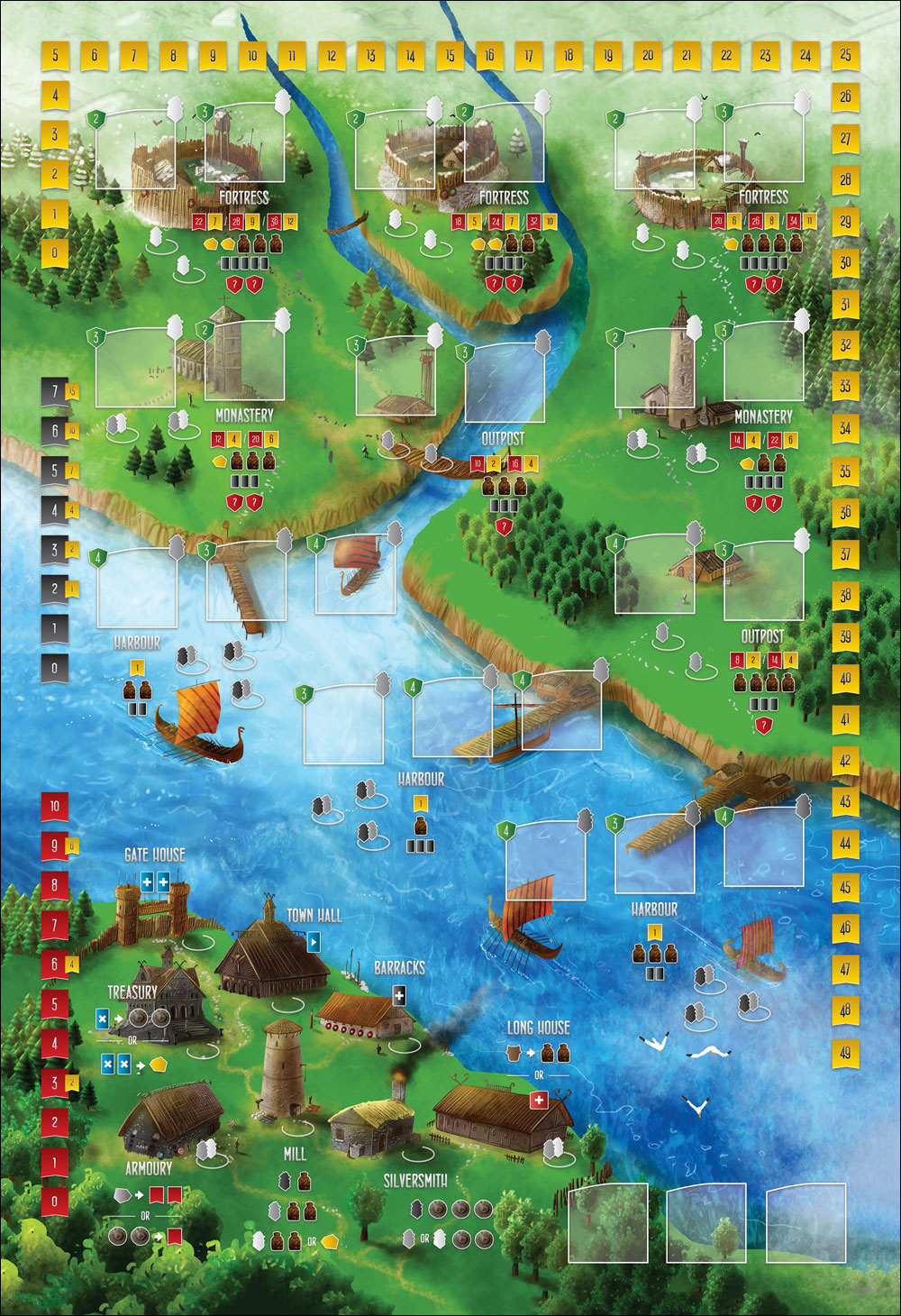
In fact, the campaigns were as follows:
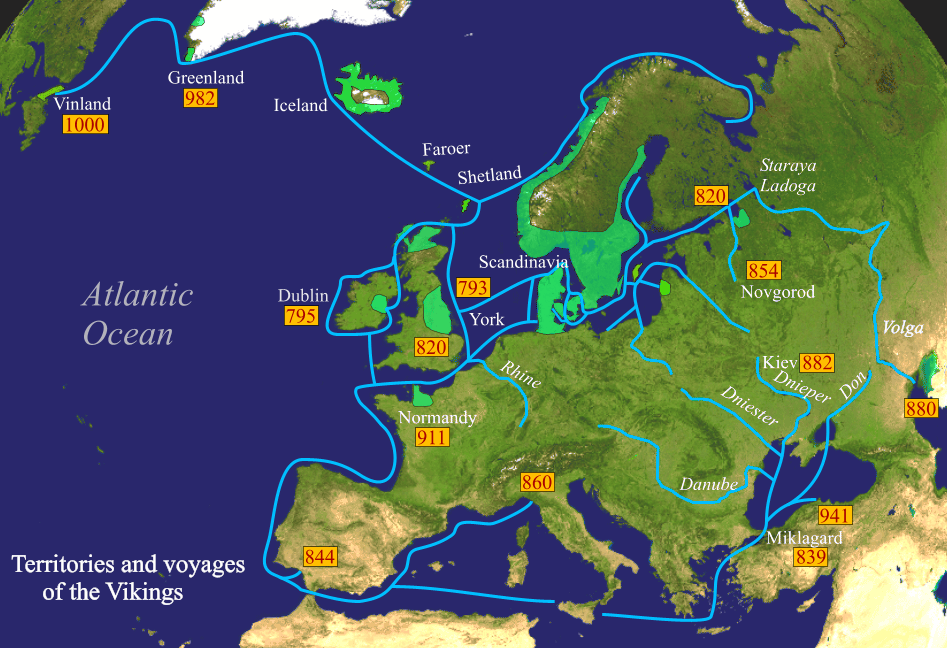
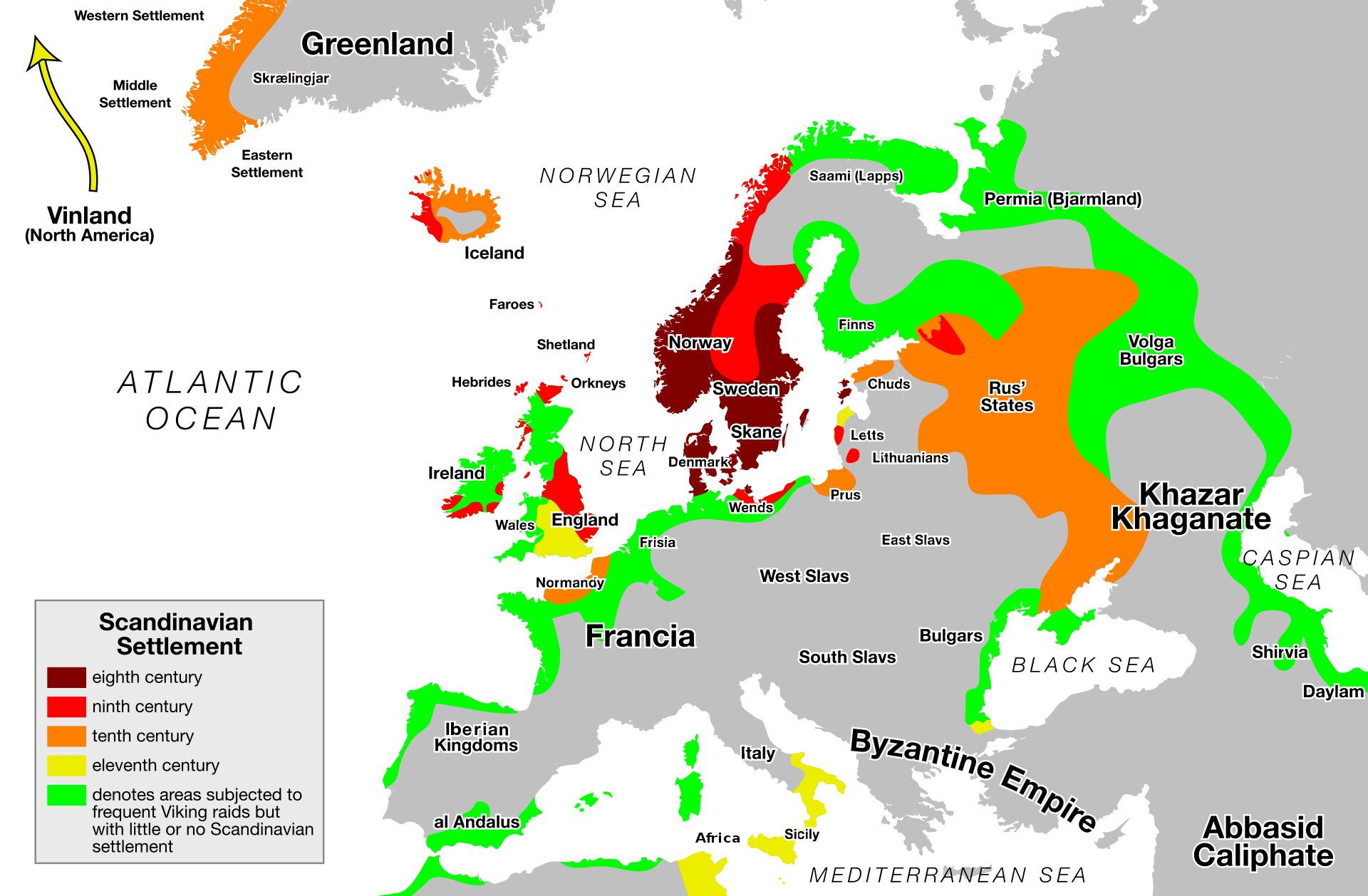
We look at the bottom of the playing field, at the settlement:
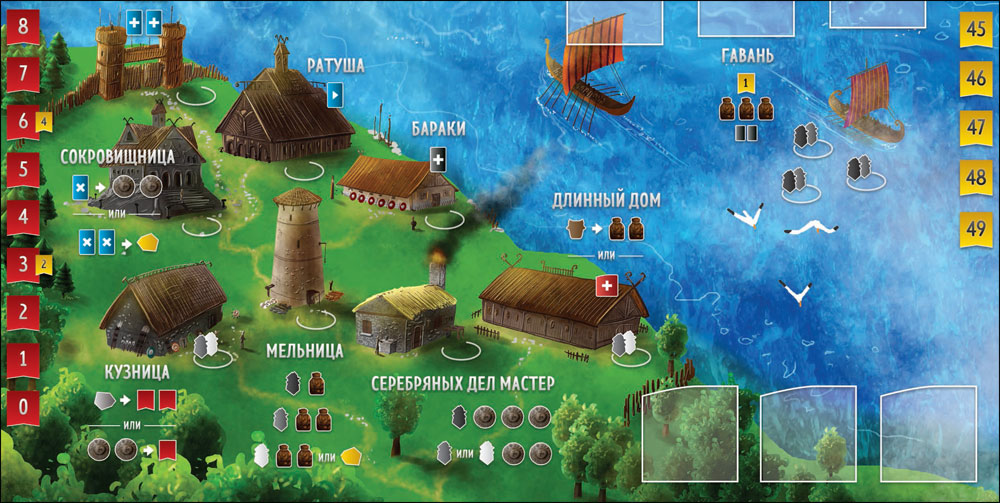
The Viking settlement is, in fact, a winter base. Let me remind you that the main Viking profession was to rob. They left the base for raids on ships, walked almost the entire season until winter, and returned with their loot to their base.
They built settlements on elevations near the water. Near the water - it’s clear that for logistics with ships. On the dais - because it was still necessary to protect the settlement from other scumbags, in particular - from those Vikings who robbed this year badly and who have no other choice but to go to visit a neighbor. The best position is a hill deep in the fjord to notice the adversary from afar.
A picket fence can be seen at the edges of the settlement - he had the task of increasing the effectiveness of the defenders. That is, the settlement was built so that if there was a Viking battle group inside, no one would even think to take it soberly, and in the absence of a battle group, so that those who remained (old men, women, intellectual masters) could defend themselves well enough so that the attackers chose more affordable target.
The long house was built one of the first, and this is the architectural dominant of such a settlement.
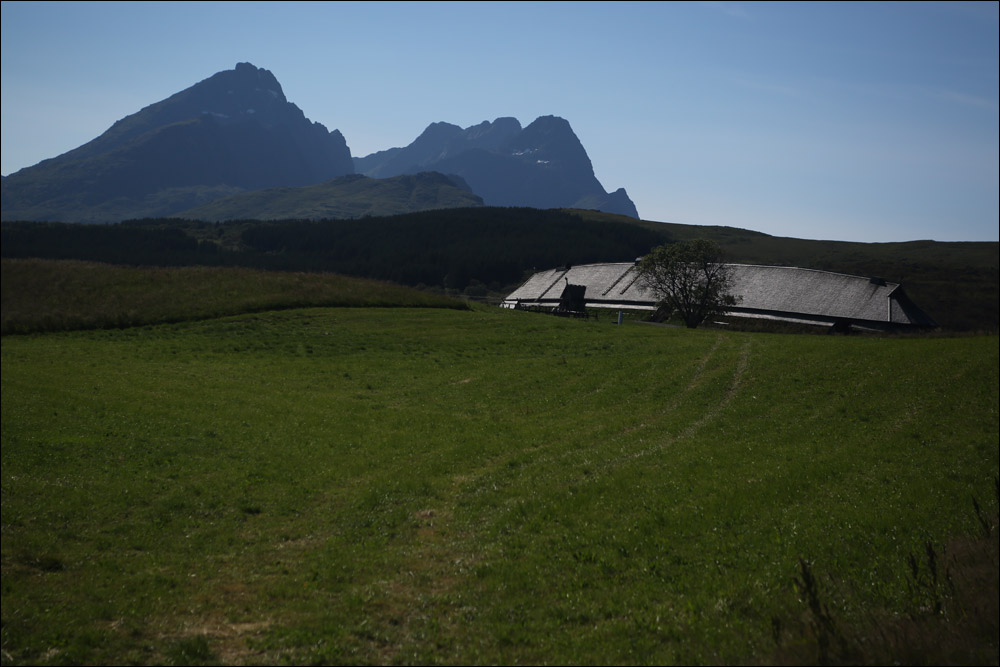
The long-preserved house on the Lofoten Islands (Norway)
Inside, meetings were held, a dining room was located and craftsmen worked. In the absence of other buildings, a long house replaced everything else. As the settlement developed, a forge (in which the Vikings worked with the metal that they had been trained during the raid), barracks for living and various outbuildings, workshops were brought out. Separately made a place for meetings. Separate houses for families quickly appeared around them (on the map in the game they are not there to simplify the interface), where different people lived, depending on their rank.

A master archer from a long house, a museum actor depicts a member of a battle group capable of repairing weapons on a campaign. I was very surprised that I, Russian, can shoot. He dofig does not know about role-playing games.

This is in Iceland, for the most part blocks of residential buildings have been preserved, they have changed windows and doors to modern ones.
Women were both stolen and their own. Children were brought up collectively: in a family, plus boys - in fact, all men, girls - all women. Parents were loved and appreciated, they became attached to the family, but the boys were raided from the age of 6. There was very little space on the ship of such a Jung, but he did it well. Well, there was no school, it was necessary to study the main profession somewhere. So we can say that the squad coached such a young man.
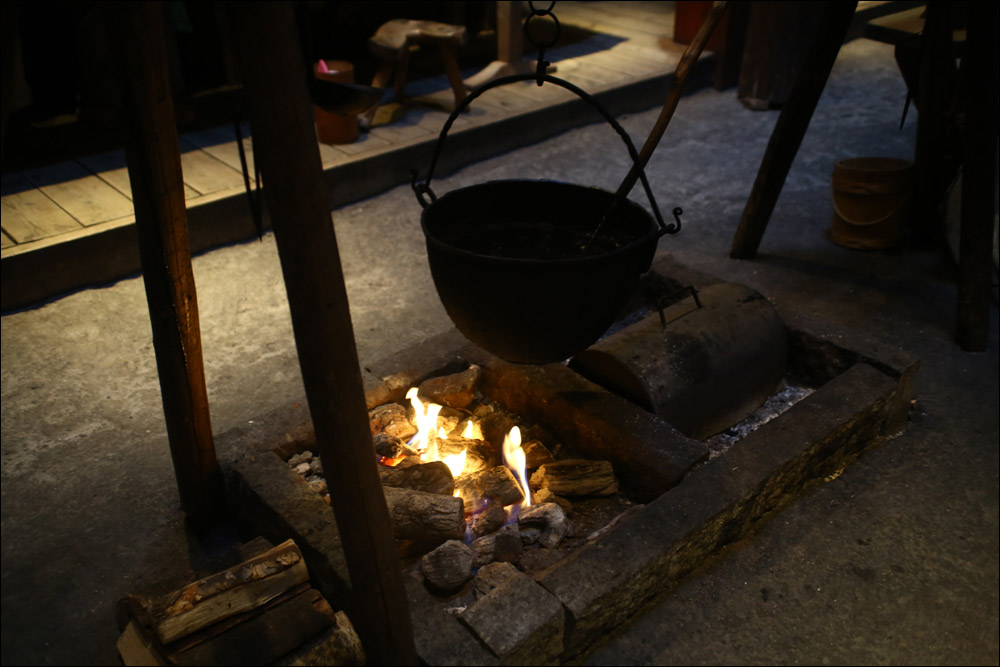
The food was prepared on the outbreak, the water could be right in the house in barrels or even in a well in one of the rooms.

Here, the maiden of the shield behind some devil is at sea and in war paint. Women were not taken to the dragcar for approximately the same reasons as pirates - since there are significantly fewer of them than men (ready for battle), the fighters will fight for their attention, and losses will begin even before the destination. Virgo really could defend the settlement in the winter, but in general in the game it is a tribute to the political correctness of the West. She also has a very interesting thing in her hands - the Novgorod ax. This is just quite realistic.
Here is a reconstruction of women's studies in the museum on Lofoten with actresses:
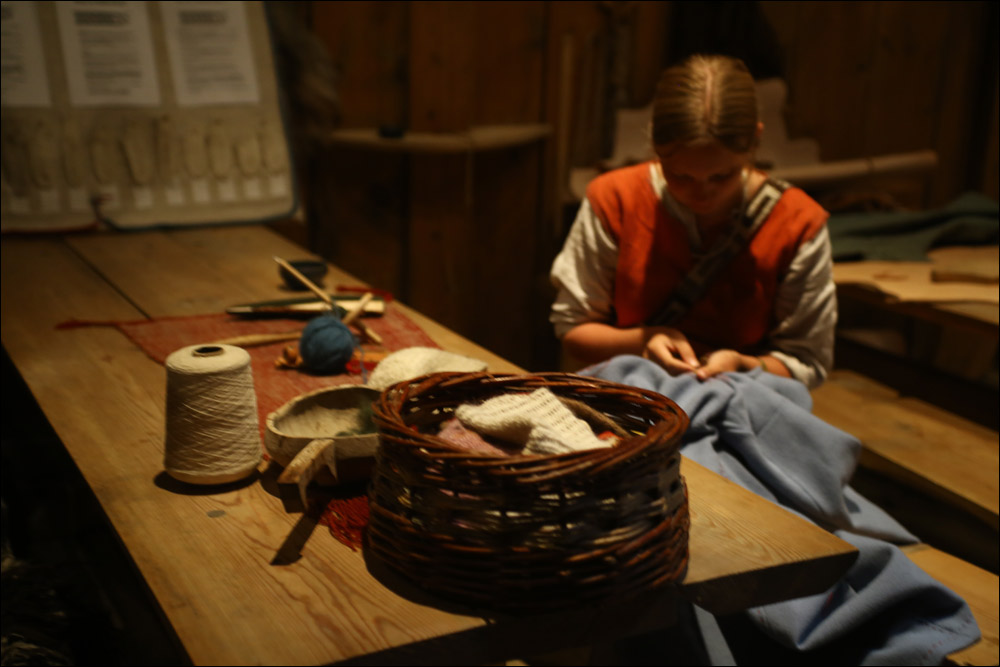
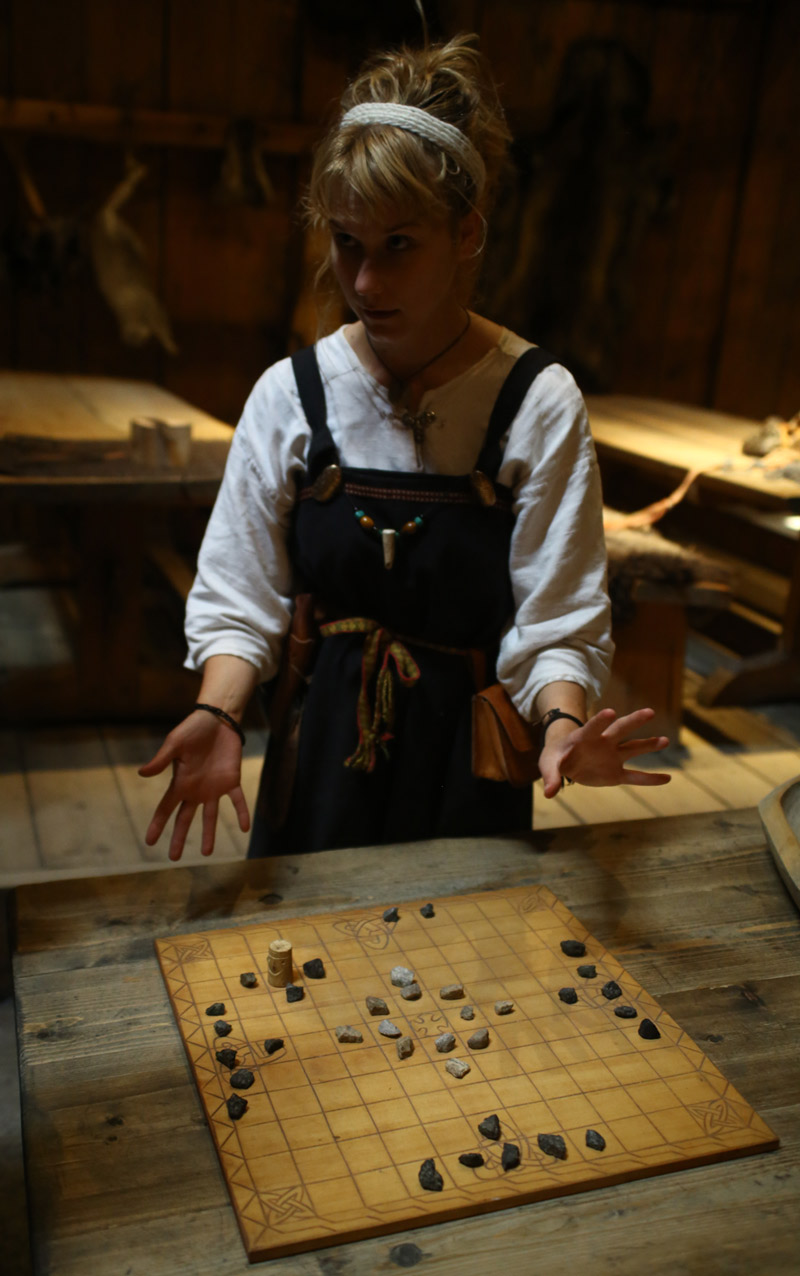
The second lady shows not so much an almost Slavic costume as the game Nheftafl or Kneftafl, a convergent prototype of chess.Here about her more details in our telegram channel.
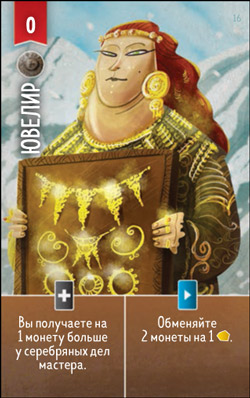
The jeweler has female jewelry in her hands and temporal rings are visible. These are things to display social status. Like military uniforms and officials’s watches. And then the major will meet with the official, and it is not clear who is ku to whom. Ornaments exclude such issues. Women also have many different beads, and jewelry was used in marriage rituals as a dowry. In men, a shirt with a color code for quick reading still conveys social status.
The Vikings could lay the base not only in a new place, but also by taking over someone’s settlement. For example, a monastery. Then they rebuilt everything for themselves.
There were fairly strict social groups: slaves, peasants, workers, a junior squad, a squad, then officers and officers. Separately, there were artisans, who were at first incomprehensible types, and then began to be valued as a source of knowledge and unique skills. Actually, sometimes critical specialists were recruited, hired or stolen corny for the settlement. It was normal practice to hire a person to train their own for the season, and then try on their own.
In the game, social inequality is portrayed directly on top of the settlement with the necessary jobs (multi-colored figures, and white with the artisan) and different production of resources from different people. Here is another picture:

As you can guess, the intellectual elite has already begun to be appreciated.

The old people were respected, they were not retired to the sledges tied to the sled, but if the enemy came, here's a piece of iron, fight with us. And they fought, because dying with a weapon in his hand is a great honor than from old age. And so they often were the most important experts and custodians of the knowledge of the settlements. Writing appeared very late, already because of Christianity, and before that there were only sagas. From the sagas, only one thing is clear: no matter what bad happens, Loki is to blame. Definitely. Everything else is in question, because the sagas were first transmitted orally many times, and then many times corresponded closer to modern times. The sagas were a training system because they created role models and situations with decision methods in the Viking brain.
Operating activities
The Viking Age begins in 725 and ends with the fact that in 1066 Norman Wilhelm became king of England and received the battle name Conqueror. At first, they did not pay attention, and they mainly entered pictures of sea robbers who rob honest people. By the way, an interesting version of the origin of the myth of horned helmets: it seems like in one of the monasteries they were depicted as demons attacking from night and from the sea. And demons must be horned and scary, otherwise the viewer can mix up who the hero is. So that the picture of the destruction of the monastery did not look like something like a call to break other monasteries, it was slightly modified by an explanation of who was bad here. Since then, a rumor has spread about the identification horns on helmets.
UPD: homocomputeris leadsin the comments a link from which it follows that horned helmets were, but very rarely.
Well, everything of value traveled with a battle group. That is, they came from a raid with reserves for the winter, lived this winter, then again went into a raid. An interesting thing happened when it was not possible to plunder correctly or failed to return on time. At this moment, professional warriors were hired by someone, that is, they were hired. Sometimes to our Russian princes. We have a central point of one of the main trade routes - Smolensk. There, archaeologists still dig the Vikings in stock. Around this comes the monetary system - the Vikings traded a lot with anyone and got paid a lot than that. The same prince Vladimir had to pay with something. Well, all sorts of useless nishtyaki Vikings in large settlements tried to bargain for what they needed. If so, it did not work out.
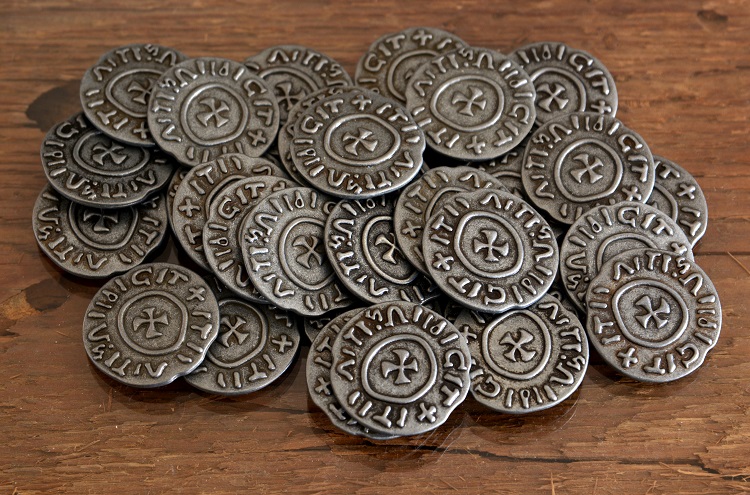
Coins in the game are metal. Since the money at home had almost no practical value, they were often buried in the form of a treasure. Treasures are still found. So it is better to study the Viking banking system with a metal detector.
Vikings went on a campaign in dragrakars (this is a big boat), goods were transported on knorrah (trading pot-bellied ships), and on river-lakes and generally walked on small boats for 5-7 people.
Drakkar is the peak of shipbuilding of that era. This is a very light boat for rowing, the crew of which is almost the entire crab. Rhythmic songs were used for synchronization, and there was a special fighter who sang them. The sail made it possible to gain decent speed and make steep maneuvers until the sail could cover another ship in the pennant direction. At the same time, the ship was small enough to enter small and shallow rivulets and swim directly to the target with the cry of “SURPRISE”. In Norwegian.
Very deep optimization and integration: for example, the fighters' shields were put on board and became part of the casing (protected from the arrows of the rowers), and then snatched at the beginning of the landing or boarding. At the same time, the rowing hatches were not blocked by by design shields. About 20-30 people usually climbed into the drakkar. They slept right on the deck, in the superstructure they kept valuables like weapons (to protect them from moisture). The task force was assembled from several dragrakars and, if necessary, knorra (40 people on board). Knorrs were the ships of the colonialists.
Maintenance made the carpenter an ax, saws were almost never used. The same ax, it seems, was used quite universally, which tells us the name "Brodex" (carpentry ax) for this weapon:
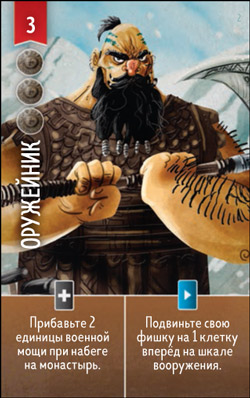
Navigation is based on the stars, so they could walk away from the coast, which gave an incredible ability to “catch the fuck” for a long pursuit. The crash happened near Iceland, where the stars are often not visible - they used crystals to polarize the light to see in which part of the sky the sun is. Bees and ants do the same, by the way. Ravens were also used - it is worth releasing a bird into the sea, as it rises and looks where the earth is. And then it will fly there.
Now about weapons. At first, it is clear that they looted, then they used it.
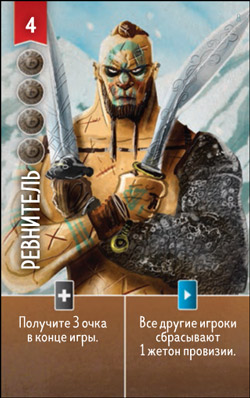
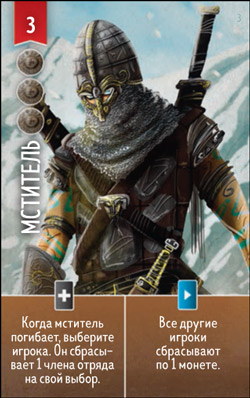
But as the bases developed, the selection of the most popular types of weapons and progress in crafts appeared more interesting system. So, the first and simplest is the spear. Cheap, deadly and you can still throw. Blades - convenient in clinch and boarding, work well with a shield. They didn’t bother sharpening the lower two-thirds, especially with the guards, and made carolings (blades with the same width almost throughout, which pushes the balance away from the usual European tradition) and swayed them with a sweep. Later there was a problem with picking enemies out of armor - here small cleaver axes, brodeks ("bearded" axes for chopping helmets) came up perfectly. Shields for protection against arrows. The armor was layers - lamellar lamellar on top of the chopping blows (this is the most expensive and latest part of weapons), then riveted-split chain mail, then a leather shirt, then a Viking himself. At sea, a layer of chain mail did not leave a chance to swim, so the leather shirt was the basis. According to helmets - they can’t establish in any way whether they themselves made owls or not.

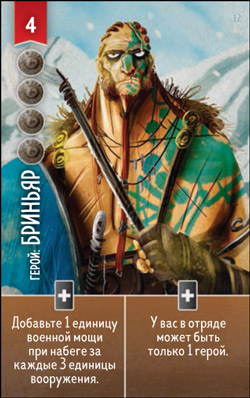
These lovely people are painted with characteristic camouflage. It’s like in zebra sailors: a psychological attack. Last but not least, the Vikings were portrayed as demons because of these image features. Again, pay attention to the number of helmets per capita, you can approximately establish that we are in the game in the first third of the Viking era. Helmets are expensive, and having a good one is a luxury.
Bows were used a lot and often - at first it was a cheap way to attack from afar, and then they came to something like an English long bow and got their snipers. Which is very useful at sea before boarding. At the same time, everything suitable was thrown from the streets to the axes. In later centuries, more protection appeared, but the need for metal gloves was never substantiated, it seems.
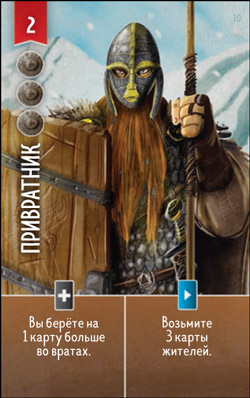
The gatekeeper has an owl helmet on his head (officially they are called differently), an early version, without a pouch, but with protection on the sides. In the course were also on the cheek, on the upper lip and on a full face. Please note that nobody wore the buckets on the head - the second goal of the helmet is to let the blow slip. Horns upwards would clearly hinder this, and would roughly double the force of the blow to the helmet with most tools. The shield from the picture is in question: they all had fists without an elbow mount (almost all round), which he could grab somewhere with a very low probability.

And this is a berserker, which has nicely snuggled up various dietary supplements. Considering that there were fly agaric mushrooms and were not able to clean them of side components, I note that the romanticized Asterix and Obelix had to go into battle with saliva dripping in all directions and slightly ruffled. But this is not the main thing in life, the main thing is to kill everyone!
How did it end? The Viking business stopped at a time when the population of the northern countries fell, the feudal system made the raids more difficult (it is difficult to storm the fortress with an army), and in general the world changed. In Iceland, the Vikings became mainly farmers and healed peacefully, and on the continent they went along the path of the feudal system. Judging by the aforementioned William the Conqueror, in places it is very effective.
About the game in general
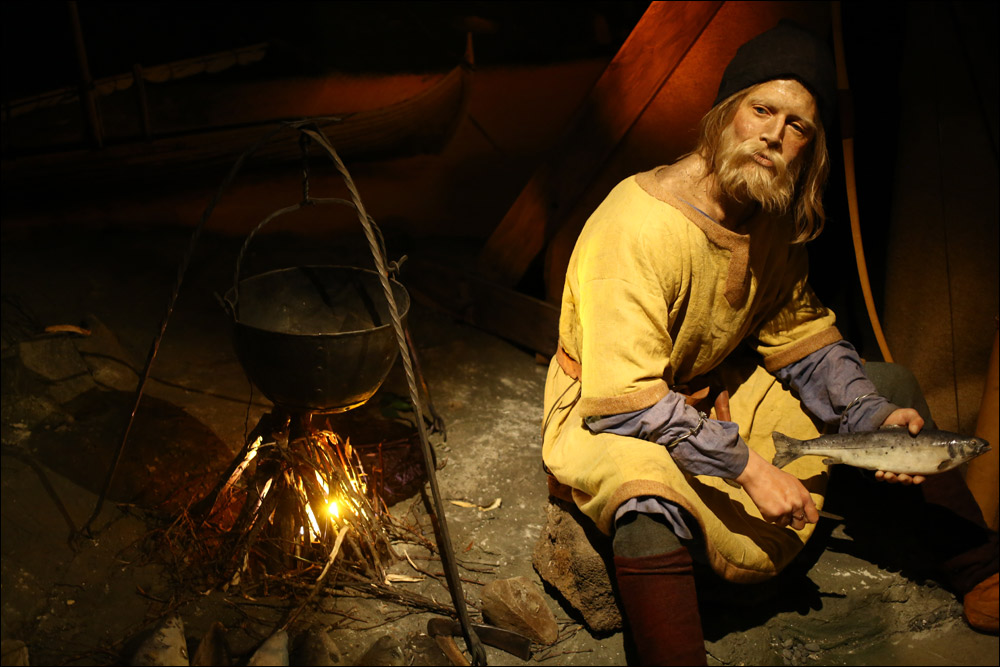
If very briefly, then you act as follows:
- Get ready for the raid. That is, you complete the ship with resources and people, mend weapons and so on. This is part of the base, and everything is very cool there. There are a couple of unexpected mechanics with “set a man - took a man”, but this is already a game-mechanical conversation. It seems that this mechanics became the thing that gave the author a prize for his contribution to the development.
- When your "cow" is ready - run on and rob. It’s not very different from the usual combat mechanics: rolls of dice, which are modified due to the different actions of your fighters and heroes. Accordingly, against different goals, it is necessary to recruit different units with different abilities.
And in these two places the spirit of the Viking society is reflected even further. Let me remind you that death was perceived as an honorable part of life. There, over the horizon, they were waiting for the Valkyries in Valhall, and everything went to the point that the data were at the documentary level (from the point of view of a resident of the era). Therefore, the Vikings were cut without fear and doubt. Game-mechanical consequence - when you rob a settlement, you take prey. Sometimes you come across Valkyrie chips. Then a lot of luck happens for some members of the squad: they die and get to visit them.
The game is very good for introverts in that the kernel does not require direct competing actions. You have one settlement, and the competition is at the level of "who will take more booty and glory." There are actually interactions between the players, and they are very deep, but it’s clear that it becomes the game after the fifth. And before that, a very simple gameromechanical core makes it possible to run around without looking back and enjoy how everything works out successfully. So you can play even with children. They will then be able to surprise the history teacher with a couple of stories in the spirit, "Yes, we went in these waters, oh and the fortifications they have there, noble." Well, or just a little better to understand how the life cycle of this people is arranged.
“Vikings” or “Raiders of North Sea” was made by Shem Phillips from New Zealand. New Zealand is a country almost as far from the Viking range as possible. It sounded very funny until he scooped up a couple of awards in 2017, started selling wildly, entered the top hundred of the world’s dashboards rating and won two more awards in 2018, and one for outstanding services in game development.
We became interested, played and got a license.
This is what the box looks like (a test copy printed on a low quality figure) and Sergey Gulyaev, a man who remodels Viking even in modern times and occasionally fights at festivals:

He helped in the tests and checked this post for factology. And once again he asked me to convey that once he tried to fight in a horned helmet (captured in a different era) and got a horn so that his neck was almost broken. Therefore, no Viking horns up!
He made this knife with his own hands, it is also a reconstruction:

That is, the author of the game Shem got into the market - almost the entire planet knows the Vikings. Even some dress up under them, reconstructing costumes from finds. Add cool mechanics, wonderful art, pour in iron coins ... And here we have a bestseller.
In Russia, the game is now in a crowdfunding campaign, the circulation has already been collected, and it is already being done (components until assembly into boxes). That is, it’s now just about pre-ordering at a discount. There will be 1,500 pieces, those that can’t be dismantled on pre-orders will go on retail in the country. There is a game on the shelf of 3,500 rubles, in the pre-order of 2,900 and still comes with promotional cards. Link here . On the same link more than anything about the game itself.
